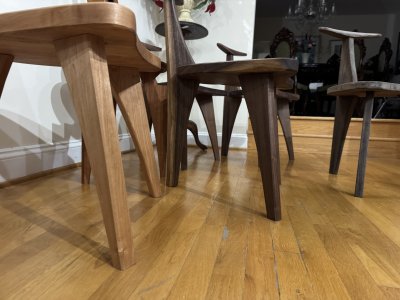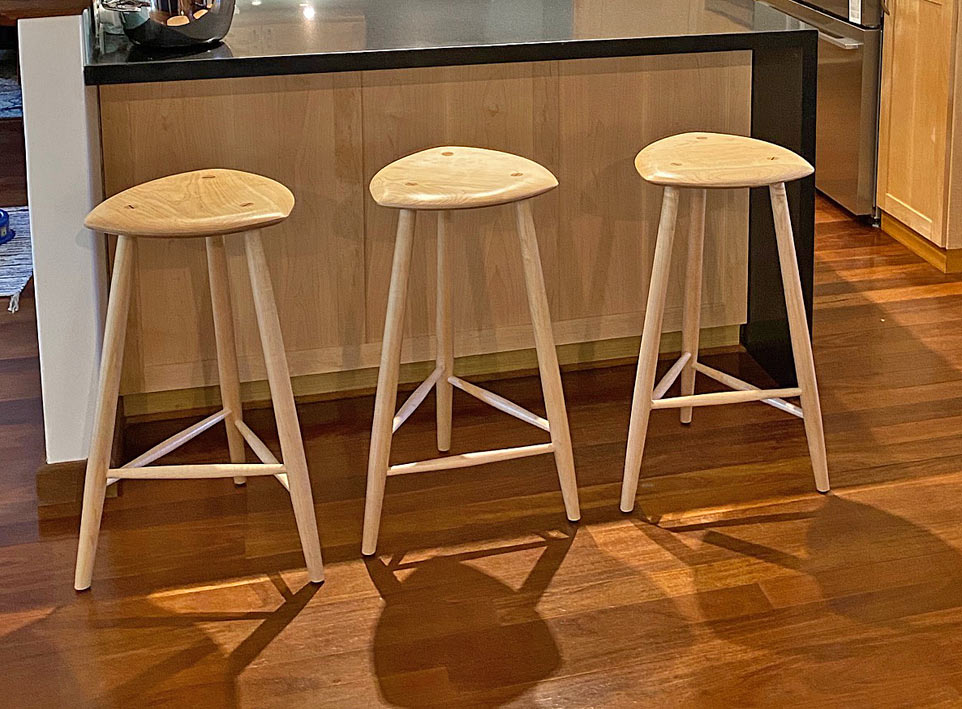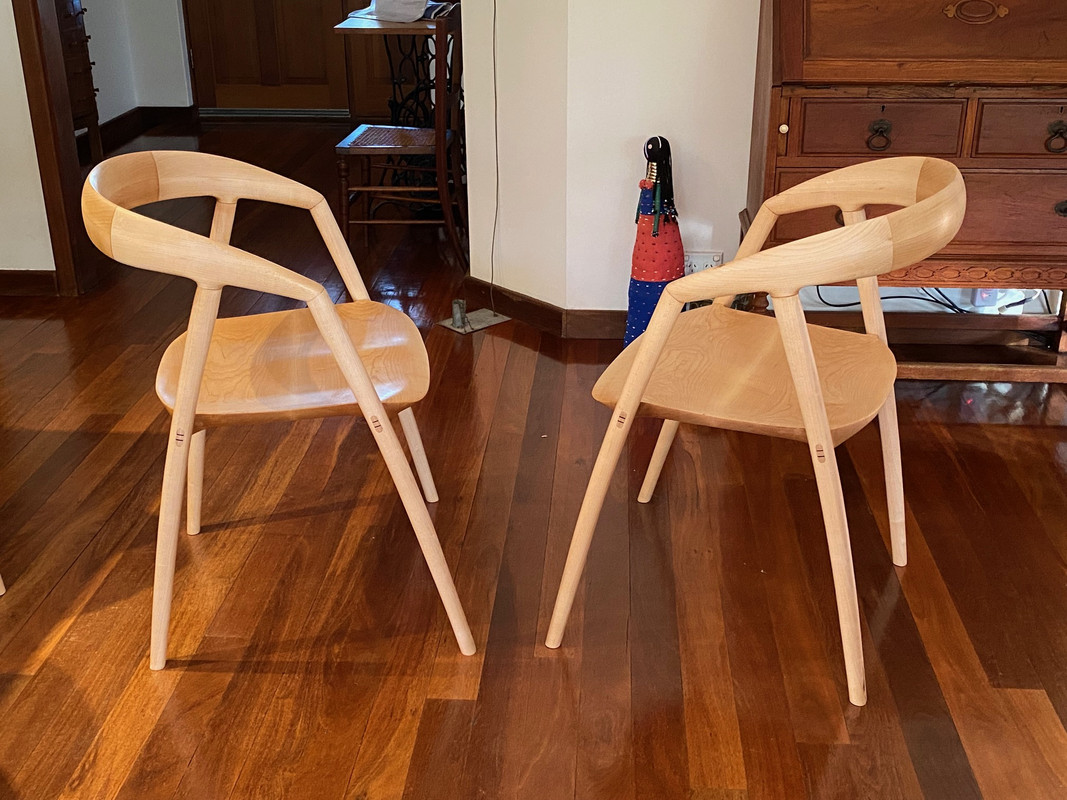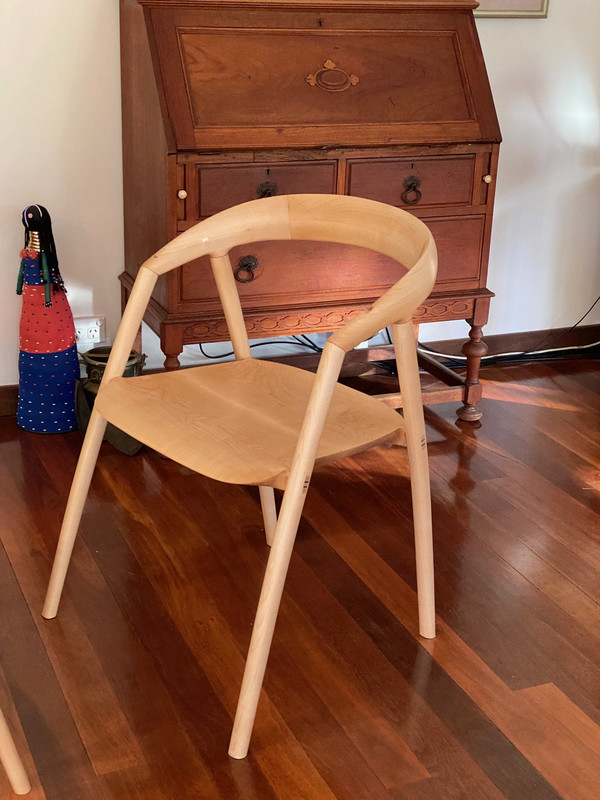onocoffee
Member
This may have to be filed under "listening to too many sources".
Recently, I was listening to a podcast (maybe WoodTalk) where the hosts were talking about chair legs and their angles. Evidently, legs set to 10 degrees is "too extreme" and is prone to failure.
I'm asking because I've made a few three-legged chairs that I set the front two legs at 10 degree angles. Is this angle too extreme?
I find that I like the aesthetic of the legs at this angle and I find that this angle also gives the chair solid stability. That said, I can change the angle if it will truly be prone to issues in the future. While each one varies, the front legs are all right around 27mm in thickness (maybe 25mm, at the minimum).
I'm interested to know what you think. And if there is a better/ideal angle for such legs. Thanks!
Recently, I was listening to a podcast (maybe WoodTalk) where the hosts were talking about chair legs and their angles. Evidently, legs set to 10 degrees is "too extreme" and is prone to failure.
I'm asking because I've made a few three-legged chairs that I set the front two legs at 10 degree angles. Is this angle too extreme?
I find that I like the aesthetic of the legs at this angle and I find that this angle also gives the chair solid stability. That said, I can change the angle if it will truly be prone to issues in the future. While each one varies, the front legs are all right around 27mm in thickness (maybe 25mm, at the minimum).
I'm interested to know what you think. And if there is a better/ideal angle for such legs. Thanks!
Attachments
Last edited:




